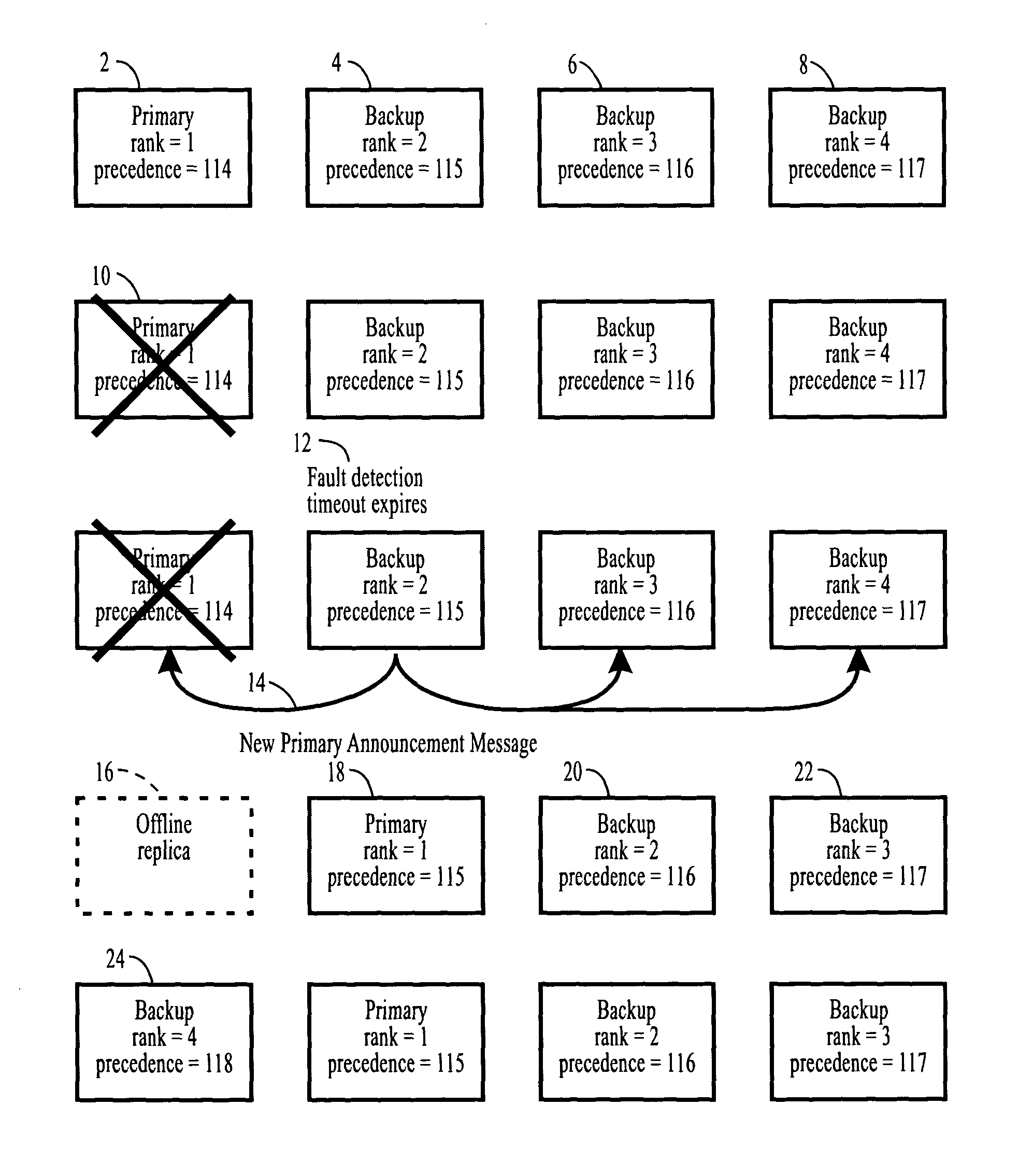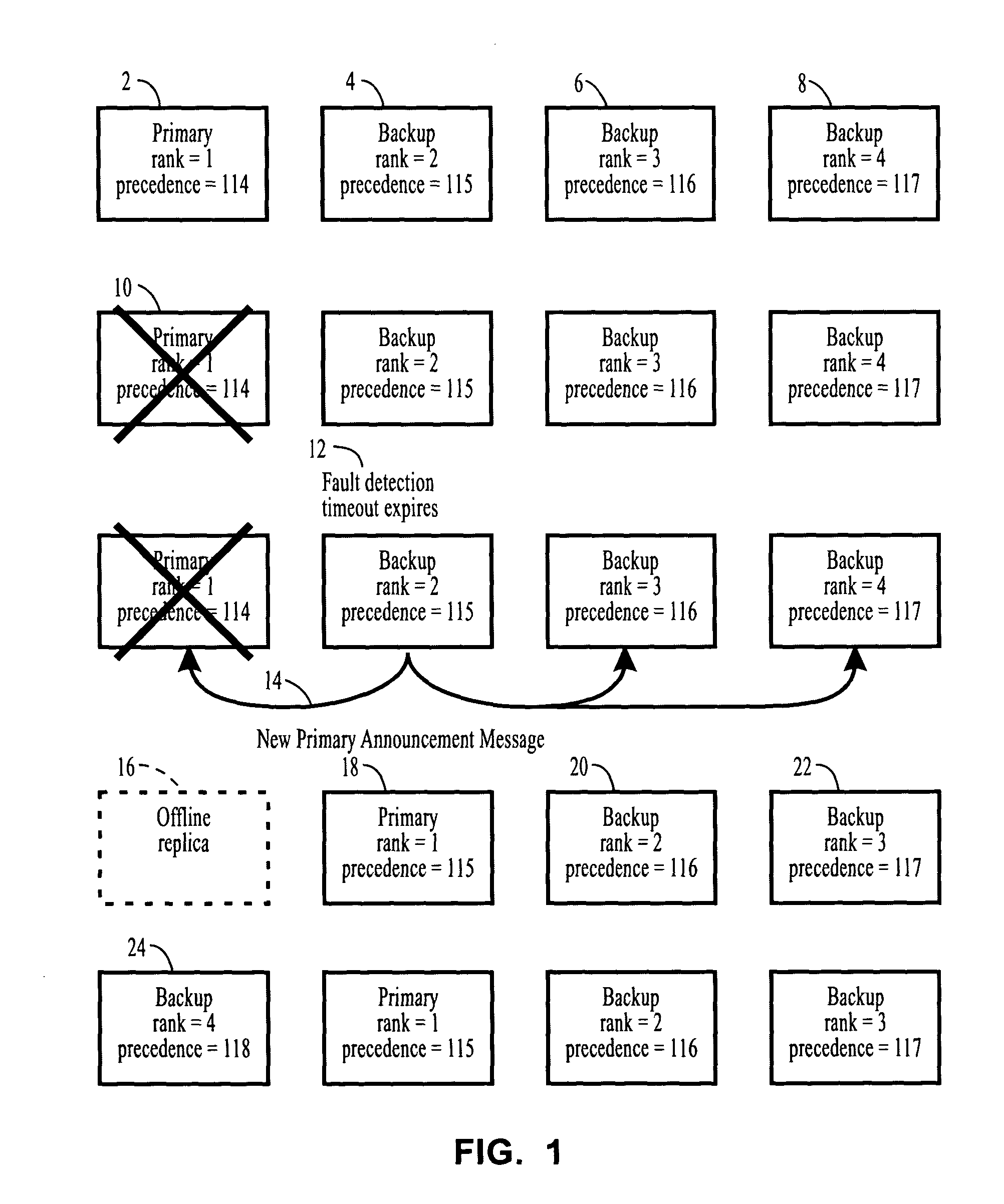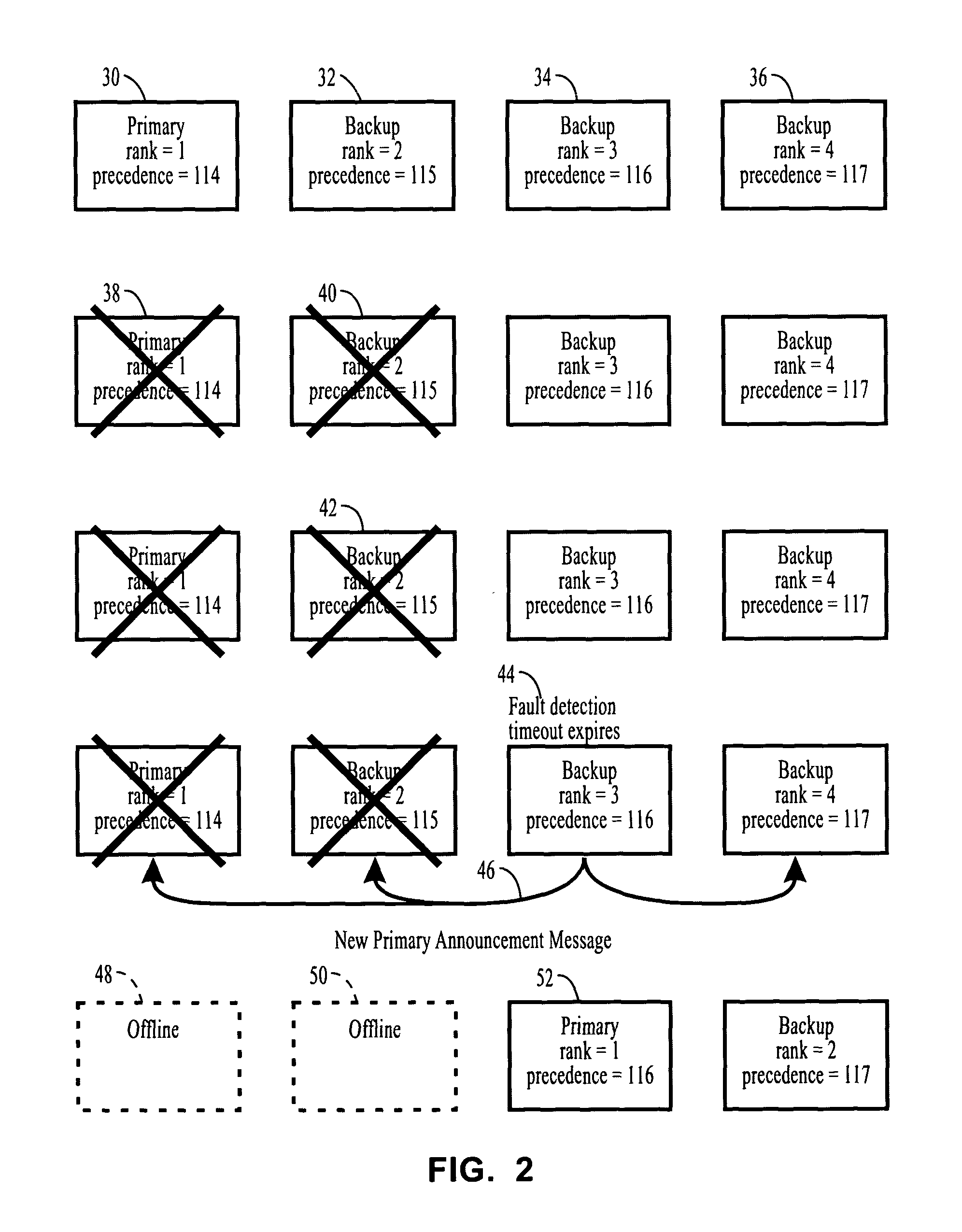Consistent group membership for semi-active and passive replication
- Summary
- Abstract
- Description
- Claims
- Application Information
AI Technical Summary
Benefits of technology
Problems solved by technology
Method used
Image
Examples
Embodiment Construction
[0085]The context in which this invention is described is an application that is replicated using Semi-Active or Passive replication, where the members of the group are distributed across multiple computers within a distributed computer system.
[0086]When an application is replicated for fault tolerance, using Semi-Active or Passive replication, there is a single Primary replica and one or more Backup replicas, where the replicas constitute a group. In other usages of groups, it is also convenient to designate one of the members as the Primary and the other members as Backups.
[0087]In this invention the term object is used to refer to the entities that are replicated, which may be processes, containers, components, memory protection domains or processors. The invention is described in terms of a client that invokes methods of a server, although an object can act as both a client and a server in a multi-tier or peer-to-peer application, where the server also acts as a client and invok...
PUM
 Login to View More
Login to View More Abstract
Description
Claims
Application Information
 Login to View More
Login to View More - R&D
- Intellectual Property
- Life Sciences
- Materials
- Tech Scout
- Unparalleled Data Quality
- Higher Quality Content
- 60% Fewer Hallucinations
Browse by: Latest US Patents, China's latest patents, Technical Efficacy Thesaurus, Application Domain, Technology Topic, Popular Technical Reports.
© 2025 PatSnap. All rights reserved.Legal|Privacy policy|Modern Slavery Act Transparency Statement|Sitemap|About US| Contact US: help@patsnap.com



